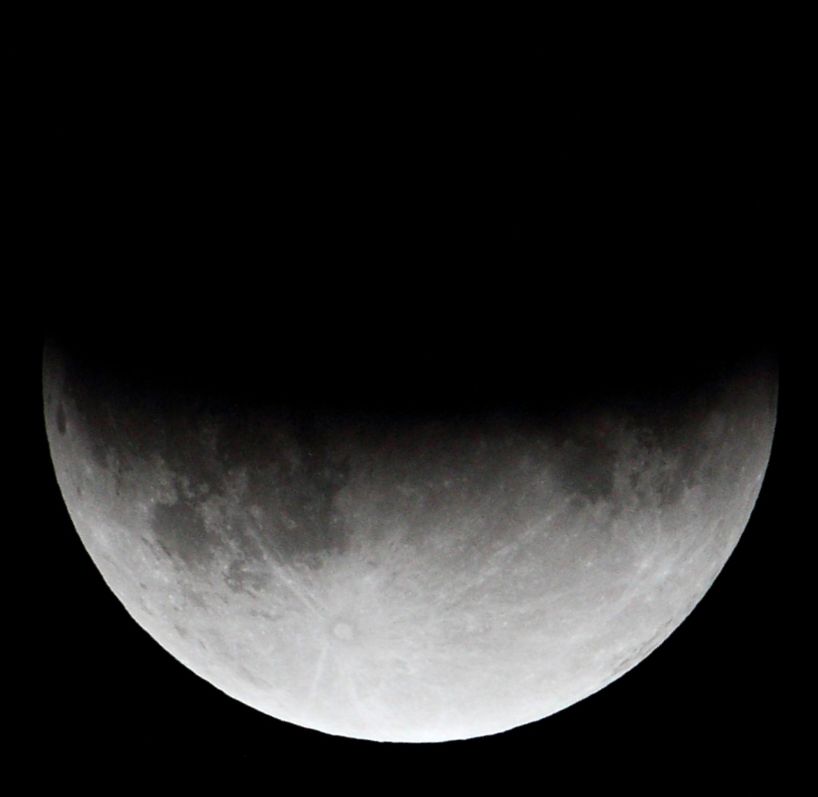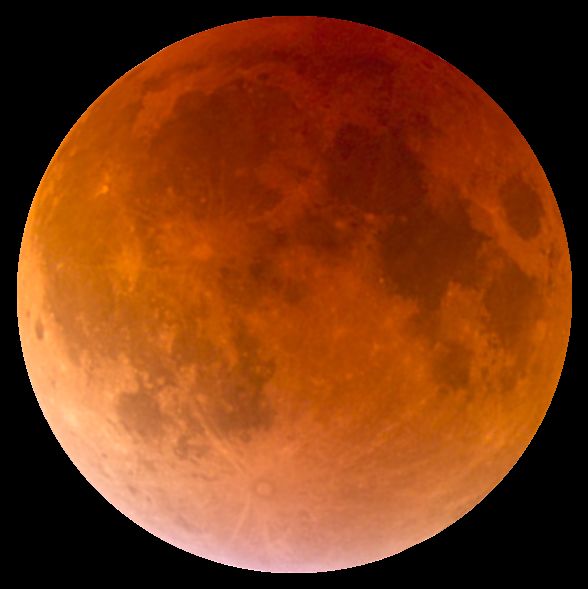Lunar Eclipse
A lunar eclipse can only occur during a full moon when the Earth casts a shadow on the Moon, which means the Sun, Moon, and Earth must be in syzygy. The Moon can be eclipsed at least twice a year, though the total lunar eclipse is extremely rare. Lunar eclipses are often seen within two weeks of a solar eclipse. The red coloration seen on the Moon during a lunar eclipse is due to the Earth’s shadow. The Sun’s light is scattered by the Earth’s atmosphere, so only the color red is not filtered.
There are three different types of lunar eclipses:
A partial lunar eclipse happens when the Sun, Earth, and the Moon are not quite perfectly aligned. The darkest part of the Earth’s shadow covers the Moon's surface. Even a total lunar eclipse goes through a partial phase on either side of totality.

Source: Wikimedia Commons
During a penumbral eclipse, the Earth’s penumbra crosses over the Moon. It causes a slight darkening of the Moon, and the effect is not noticeable. This kind of lunar eclipse is the least interesting.

Source: Wikimedia Commons
A total lunar eclipse happens when the Earth’s full shadow falls on the Moon. Sometimes called a Blood Moon, due to the red coloration cast on the Moon from the Earth's umbra, the magnitude and duration of the event are based on the location of the Moon.

Source: Wikimedia Commons